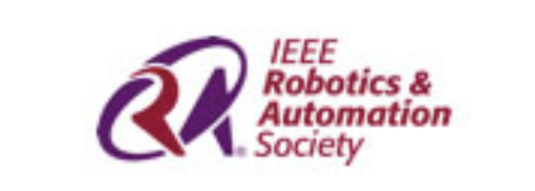Title: Improving the Utility and Adoption of Human Augmentation Devices
Organizer: Frank L. Hammond III, Georgia Institute of Technology, USA
Title: Convergence of IP, Tech Transfer, and Translation, for Medical Robotics Research
Organizers:
Yash Chitalia, Georgia Institute of Technology, USA
Matt Harrow, Stryker, USA
Hussein Akhavannik, Baker Law, Washington D.C., USA
Nobuhiko Hata, Bringham and Women's Hospital, USA
Title: Building Software System for Image-Guided Robot-Assisted Interventions
Organizers:
Junichi Tokuda, Brigham and Women’s Hospital and Harvard Medical School, USA
Tamas Ungi, Queen’s University, Canada
Axel Krieger, University of Maryland, USA
Simon Leonard, Johns Hopkins University, USA
Title: Sensorimotor Augmentation in NeuroRehabilitation Robotic and Prosthetic Technologies
Organizers:
S. Farokh Atashzar, Imperial College London, UK
Mahdi Tavakoli, University of Alberta, Canada
Dario Farina, Imperial College, London, UK
Rajni V. Patel, Western University, Canada
Title: Open Platforms for Medical Robotics Research
Organizers:
Peter Kazanzides, Johns Hopkins University, USA
Blake Hannaford, University of Washington, USA
Gregory S. Fischer, Worcester Polytechnic Institute, USA
Title: Robot-assisted eye surgery: steps toward operating room
Organizers:
Iulian Iordachita, Johns Hopkins University, USA
Emmanuel Vander Poorten, KU Leuven, Belgium
Ali Nasseri, Technical University of Munich, Germany
Title: Improving the Utility and Adoption of Human Augmentation Devices
The focus of this workshop is on improving the functionality, adoptability, and societal impact of human augmentation devices through the exploration of several technical and scientific topics thought to significantly impact the design and efficacy such devices, including:
- Non‑invasive biosignal acquisition for various physiological feedback to wearables
- Selection and acquisition of physiological signals for dexterous device control
- Indices and methods of measuring cognitive loading, discomfort, and device embodiment
- Impact of emotional arousal on device acceptance and utility
- Cognition and psychosocial implications for wearable computing
- Lowering the encumbrance of interfaces for wearable devices
- Improving neuromotor learning for wearable and teleoperated devices
- Assessing somatosensory plasticity and improving sensory feedback approaches
- End‑user experiences, challenges, and insights into chronic assistive device use
- Roadblocks to the success and proliferation of clinical human augmentation systems
The breadth of these topics speaks to the large technical and scientific scope of the challenges in human augmentation, and highlight the need for more concerted efforts in addressing these highly interdisciplinary areas. The goal of this workshop is to have leading experts in human augmentation discuss the most confounding and salient questions they face in this domain, and to generate a written prospectus on (1) the state of the field, (2) the grand challenges that unite our research efforts , and (3) prescriptions for the next steps that the community might take toward making advances critical to our success.
Speakers:
- Dr. Frank L. Hammond III, Georgia Institute of Technology
- Dr. Lewis Wheaton, Georgia Institute of Technology
- Dr. Nicholas Fey, The University of Texas at Dallas
- Dr. Minoru Shinohara, Georgia Institute of Technology
- Dr. Gil Weinberg, Georgia Institute of Technology
Workshop Website: https://sites.google.com/view/2019-ismr-human-augmentation
Title: Convergence of IP, Tech Transfer, and Translation, for Medical Robotics Research
The objective of this workshop is to explore models used by labs researching medical robotics and other fields of biomedical engineering, in bringing their research to market. The workshop will explore patenting, commercialization procedures and hurdles faced, particularly in making medical robotics accessible to hospitals across the world. It will include speakers from academic researchers who have successfully transferred research from their labs to the commercial world, the FDA, IP Law experts and several industry experts who will talk about their experience in this area. Finally, we will hold a panel to discuss any questions the audience may have.
Speakers:
1. Matt Harrow, Stryker.
2. Hussein Akhavannik, BakerHostetler.
3. Jim Markwith, Markwith Law.
4. Claire Hartigan, The Shepherd Center.
5. Dr. Terry L. Bray, Director of Technology Licensing, Georgia Tech Research Corporation
6. Dr. Scott Hollister, Professor, Wallace H. Coulter Dept. of Biomedical Engineering, Georgia Institute of Technology and Emory University
Workshop Website: https://sites.google.com/view/ismr-workshop-ip-tech-transfer
Title: Building Software Systems for Image-Guided Robot-Assisted Interventions
The goal of this hands-on tutorial is to learn how to integrate medical image computing software into a system for image-guided robot-assisted interventions, in which 2D/3D medical images are used for planning, navigation, monitoring, and validation. Examples of such robot-assisted systems include image-guided robotic needle-guide systems and surgical CAD/CAM systems. Those systems often require a wide range of image computing features such as segmentation of anatomical structures, registration of multiple images, 2D/3D image visualization, image-based planning, and data sharing with the robot controller and the hospital’s picture archiving and communication systems (PACS). However, the engineering effort to implement those features is often ignored or underestimated in academic research due to limited engineering resources or the scope of the project. Fortunately, many of those features have already been implemented and validated by other researchers in the research community and often provided as open-source software toolkits. Therefore it has become essential for academic researchers to take advantage of those existing tools and incorporate them into their own research instead of reinventing the wheel. The session will consist of presentations by several experts in the field, followed by a hands-on tutorial. The presentations will overview the software systems for image-guided robot-assisted interventions with real-world use-cases in the context of academic research. In the tutorial session, the participants will build a system for image-guided robot-assisted interventions on their own laptop computers using popular research platforms for medical imaging and robotics, namely 3D Slicer and Robot Operating System (ROS). The two platforms will be seamlessly integrated using an open network communication protocol OpenIGTLink. Then the participant will build a demo system that allows a user to plan a procedure on a 3D image, execute the plan using a virtual robot, and visualize the feedback from the robot with the 3D image. At the end of the tutorial, the participants are expected to have a working demo system on their laptop, which could potentially be used as a template for their own research project.
Workshop Website: https://rosmed.github.io/
Title: Sensorimotor Augmentation in NeuroRehabilitation Robotic and Prosthetic Technologies
Link the Title to the web-page: https://sites.google.com/ualberta.ca/2019-ismr-workshop/home
Title: Open Platforms for Medical Robotics Research
The objectives of the morning session are to provide an overview and tutorial about: (1) two widely-used shared platforms for medical robotics research: the da Vinci Research Kit (dVRK) and Raven II, and (2) infrastructure that supports a broader community, such as the Collaborative Robotics Toolkit (CRTK), which provides a standard API to dVRK, Raven II and other systems, as well as simulation environments.
The objectives of the afternoon session are to provide an opportunity for members of the community to present research they have performed with these shared platforms, with the goal to promote sharing of infrastructure enhancements and collaborative research. Thus, the presentations will consist of both talks (about 10 minutes) and posters. We will also hold a panel to discuss community needs, such as shared datasets.
Workshop website: https://collaborative-robotics.github.io/ismr-2019-workshop.html
Title: Robot-assisted eye surgery: steps toward operating room
Ophthalmology is a surgical discipline requiring manipulation of surgical tools with extreme precision, approaching the limits of human dexterity. Interventions such as intravenous drug delivery or novel gene and stem cell therapies push these requirements even further and call for robotic assistance to further clinical capabilities. Increasingly, interventions will not be able to be performed under surgical microscopy guidance only, but they will require information on subretinal layers, even down to the photoreceptor level. Image-guidance, thus, will start playing a more critical role in ophthalmic interventions, both for anterior and posterior eye segments, especially as new instruments capable of providing intraoperative OCT are being introduced in clinics. In the last years, translational efforts have been made and this has led to some first human feasibility studies of robot-assisted vitreoretinal surgery in 2017. It is expected that these studies will further boost the momentum that the field of image-guided ophthalmic interventions is enjoying these days.
Workshop website: https://sites.google.com/view/2019-ismr-robotic-eye-surgery



